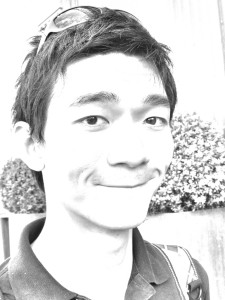Job: Sales Opportunity at Growing Japanese Firm (NYC)
Via Actus Consulting. Please indicate you learned of the listing from JETwit if you apply. Posted by blogger and podcaster Jon Dao (Toyama-ken, 2009-12). Click here to join the JETwit Jobs Google Group and receive job listings even sooner by email.
————————————————————————————————————
Position: Group Sales Manager
Location: NYC
Type: Full-time
Salary: $40-60,000
Overview:
The Group Sales Manager is responsible for building brand in the New York City area. This includes, but is not limited to actively prospecting and calling on new business, preparing proposals, making sales, managing a sales group, improving internal processes, and ensuring all events/conferences are delivered according to client expectations. The most important task of this position is to reach individual and team monthly US revenue targets. This is the one of the key managerial positions for the Company in the US. Read More
Job: Summer Abroad Leaders – Experiment in International Living (JAPAN)
Posted by Jayme Tsutsuse (Kyoto-fu, 2013-Present), organizer of Cross-Cultural Kansai. Click here to join the JETwit Jobs Google Group and receive job listings even sooner by email.
Position: Summer Abroad Leader
Posted by: Experiment in International Living
Location: Japan
Type: Summer, full-time
Overview:
The Experiment in International Living is looking for exceptional educators to lead our immersive summer programs for high school students in 2014. These individuals will lead groups of typically 15 students on programs in over 20 countries in Europe, the Americas, Africa, and Asia.
The Experiment’s programs in Japan are some of their most popular programs. They have two Japan programs: “Japanimation – Anime & Manga” and “Language and Cultural Traditions.”< http://experimentinternational.org/programs/find-a-program/japan/ > They run two groups for each of these programs, with two co-leaders for each group – meaning they’re looking to hire 8 Japan leaders!
Ideal candidates will have a demonstrated interest in intercultural and experiential learning, in-depth experience living abroad, competency in the language of the host culture, and experience working with young people. Applications will be accepted through February 15, 2014. For more information on becoming a group leader and instructions on how to apply, please visit http://www.experimentinternational.org
JQ Magazine: JQ&A with Photographer Wei Yuet Wong on ‘The Fukushima Project’

“Though people have told me no one wants to see disaster photos anymore, I think it’s a good reminder because it’s barely three years, and already people are forgetting. Not only outside Japan, but within Japan itself, people are forgetting. It’s true that people need to move on and rebuild their lives, but there’s still so much more work to be done in Tohoku.” (Courtesy of Wei Yuet Wong)
By Nathalie Ng (Shizuoka-ken, 2010-11) For JQ magazine. A member of JETAA Singapore, Nathalie was an inaka JET and her time in Japan has taught her to appreciate the flowers by the roadside and how to snowboard.
Wei Yuet Wong (Nagano-ken, 2008-10) left his home in Singapore to join JET following a summer homestay in Hiroshima. He went there because of the history as he’d learnt about the devastation during World War II, and he was particularly interested in seeing how the city had progressed since then. The relationship formed with his homestay family inspired him to join JET.
Assigned to three different schools in Ueda City, during his first few months he was often left feeling clueless and dependent on his supervisor due to the language barrier and the office hierarchy, but he soon got better at it by keeping an open mind and adapting. He is particularly proud that he was able to inspire in his students that they didn’t have to speak English with an American accent to be understood, and this has helped them to be more confident, speaking out during and outside of classes. (In fact, one of Wong’s former students even visited him and his family during the Chinese New Year.)
Since returning from Japan Wong has been working as a corporate warrior, but since last year he has finally taken the leap to pursue his photography interests. His work is now on display in a new exhibition called The Fukushima Project, which runs through 14th February at Select Books in Singapore on 51 Armenian Street. Through special postcards available for sale, visitors can write messages to the people of Hisanohama in Iwaki, which will then be collected and sent to them to let them know that their story has not been forgotten.
In this exclusive interview, JQ spoke with Wong about his visits to Fukushima before and after the 2011 Tohoku earthquake and tsunami, and the relationships he’s made with the locals through his numerous community activities.
You were posted to Nagano-ken and you lived there before the quake happened. What was your motivation for this exhibition?
I felt awed and hopeless when I first looked at the videos of the earthquake, perhaps like so many people around the world. Then why Fukushima? I think there may be three explanations. One, I first visited Fukushima in 2009 to visit friends, so I got to see Fukushima before the disaster. It was quite a different place.
Two, I have friends in Fukushima, and they live in Koriyama city, about 45 km away from the Fukushima No. 1 nuclear power plant. I was concerned about them. I was curious to know how they felt on the day of the earthquake, and then during the subsequent confusion about the nuclear power plant. I also wanted to see how they are doing when most other parts of the world, and Japan, starts forgetting about them.
Lastly, I wanted to experience how it would be like to venture into the disaster zone. I have a need to see things for myself. To touch the soil. Walk on the sand. Smell the salty air on the Japanese east coast, and try to imagine how people felt that day.
Why did you choose this particular town of Hisanohama?
It was by chance that I discovered this town. It’s quite a story, one thing leading to another, with some fortunate chance encounters. But, the best summary is: I met a friend at Koriyama Station to listen to her account, and her experiences. After that I wanted to visit the coast, so she told me that Iwaki is where I should go. With my ticket bought, I hopped on the bus for the 1.5 hour journey to Iwaki. Once at Iwaki, I went to the local tourist office, and asked for directions to the coast. The person at the office looked quite surprised, and she pulled out a map, studied it for a moment, and said, “Maybe you shouldn’t go. We used to have nice beaches, shrines, and attractions. But now, nani mo nai (there’s nothing).” I was not put off, and she finally realised that I would still go no matter what, and she suggested why don’t I go to Hisanohama, where I can have a nice walk, and just look around. So, there I went.
In the international media, most people know about Kesennuma, Rikuzentakata and Minamisoma, but Hisanohama remains unknown. So, I think it’s nice that I visited Hisanohama. It’s a town just 31 km south of the Fukushima No. 1 nuclear power plant, along the Pacific Coast, and has suffered great damage in the tsunami.

